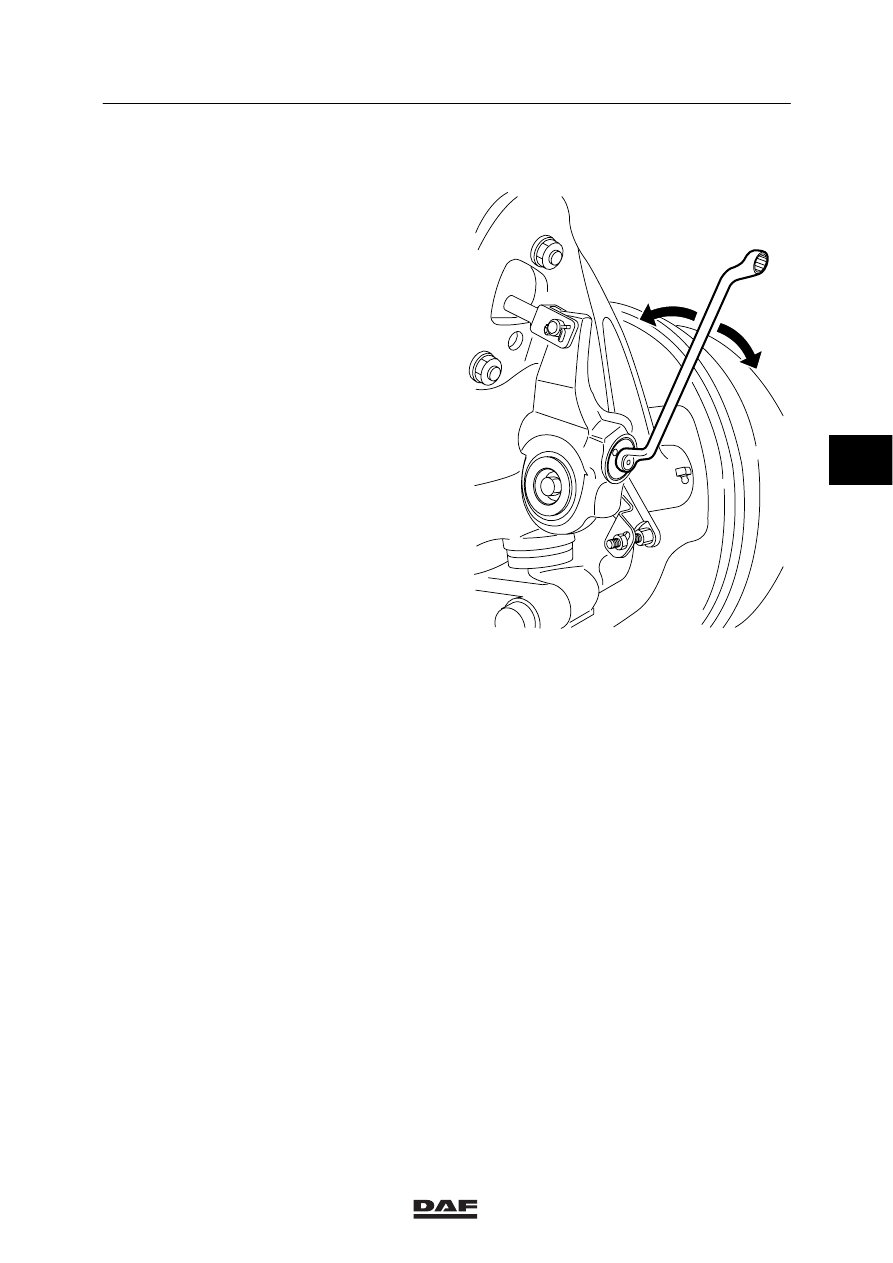DAF 95XF. Manual - part 139

6
Inspection and adjustment
BRAKE COMPONENTS
1-39
1.20 BRAKE ADJUSTMENT
1.
Set the brakes by turning the adjusting
hexagon-head bolt clockwise.
2.
Turn the adjusting bolt until the brake lining
is square against the brake drum.
3.
Then turn the adjusting bolt back
(90
_ - 120_) until the bake lining is free
from the brake drum.
R600253
1.21 INSPECTION FOR AIR-TIGHTNESS
Air-tightness
If the brake system of a vehicle has been
charged to the maximum pressure, it should
generally be possible to drive the vehicle away
after a period of 16 hours of uninterrupted
standstill, without having to first charge the
brake system to sufficient operating pressure.
This comes down to a maximum pressure drop
of approx. 0.4 bar per hour at a normal system
pressure.
Note:
Auxiliary consumers and accessories must only
be connected to circuit 4.
4
ǹ 0006